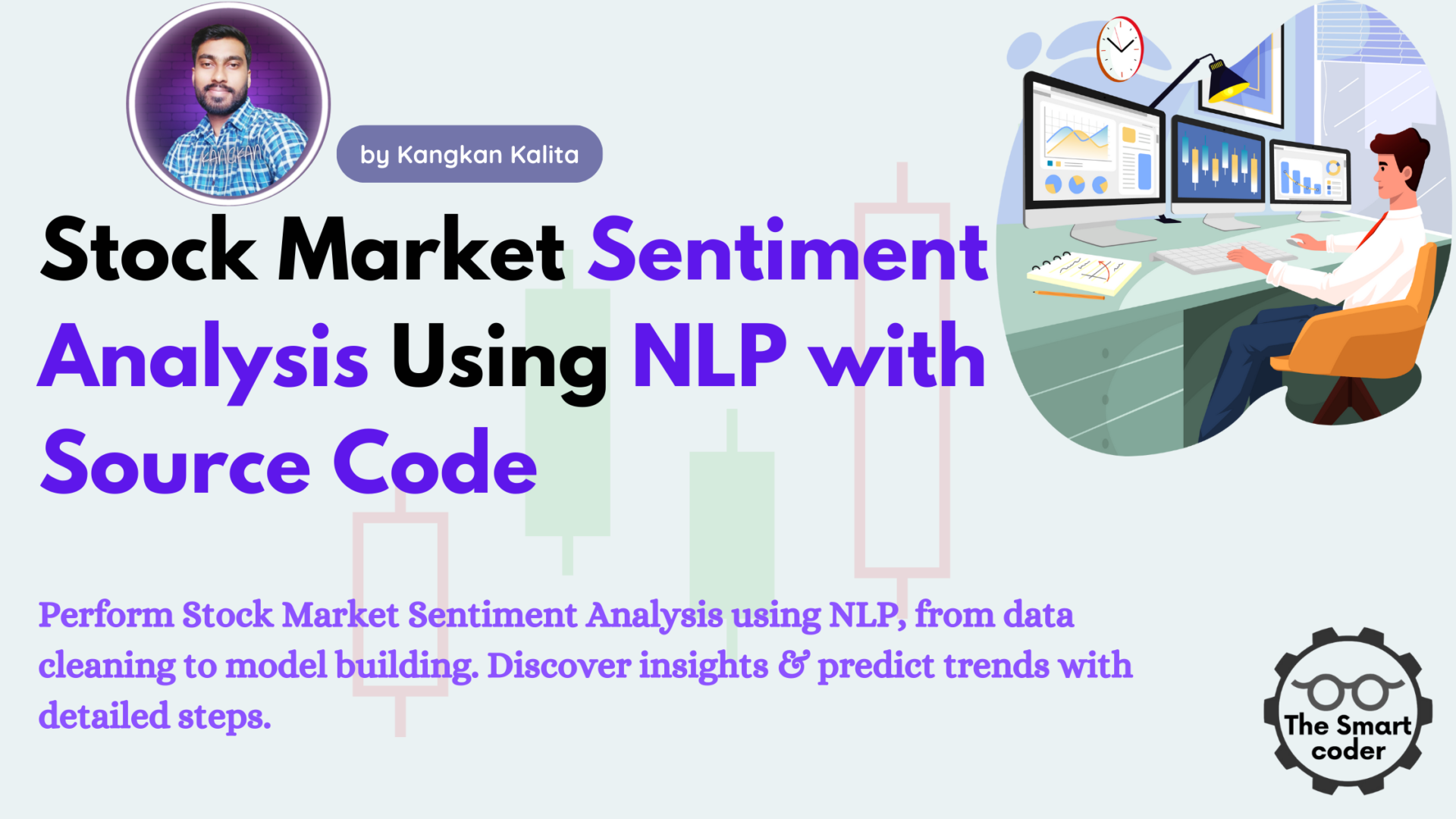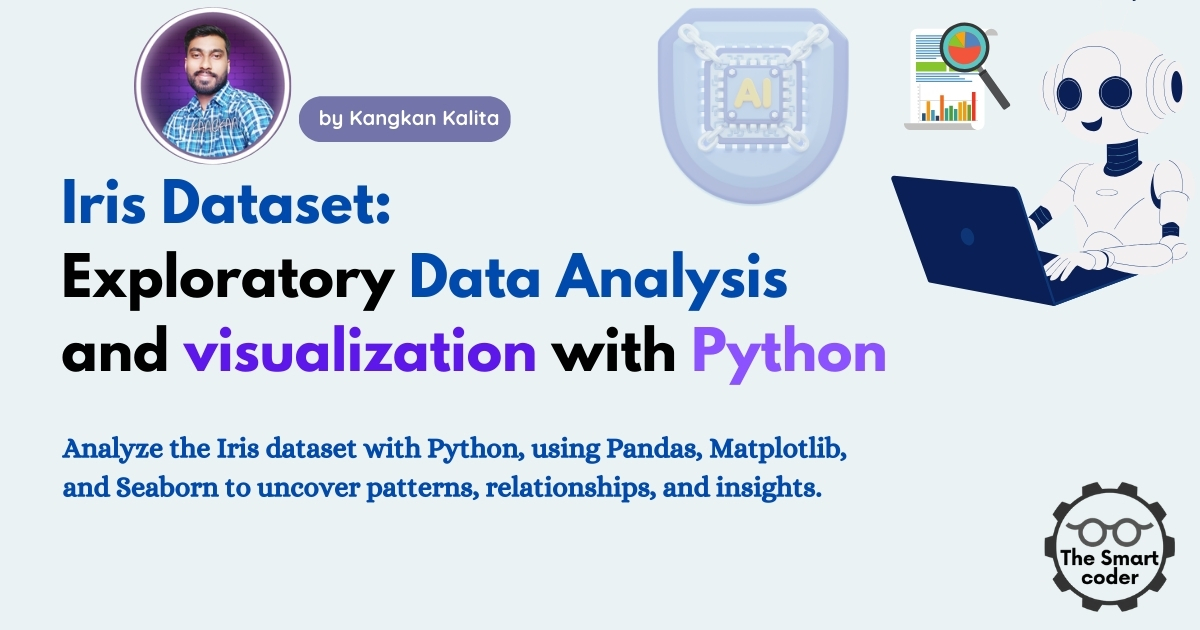Stock Market Sentiment Analysis Using NLP with Source Code
Stock Market Sentiment Analysis Using NLP with Source Code

Sentiment analysis is a powerful tool to assess the emotions expressed in text data. In the stock market domain, sentiment analysis can help predict trends by analyzing news articles, tweets, and financial reports. This project focuses on performing Stock Market Sentiment Analysis Using NLP by processing textual data, performing EDA, feature engineering, and building machine learning models to classify sentiments. This guide is beginner-friendly and includes source code for easy implementation. Lets start Stock Market Sentiment Analysis Using NLP with Source Code
Objective:
- Perform Natural Language Processing (NLP) on stock market-related text data.
- Clean, preprocess, and explore the dataset.
- Visualize insights from the text data.
- Build and evaluate machine learning models for sentiment classification.
Dataset:
The dataset can be found on Kaggle. Download the stock_sentiment.csv file, which contains stock-related news headlines with associated sentiments (positive, negative, or neutral).
Tools & Libraries:
- Python
- Pandas
- NumPy
- Matplotlib
- Seaborn
- NLTK
- Scikit-learn
- Jupyter Notebook or Google Colab (Recommended)
Instructions:
- Use Jupyter Notebook or Google Colab for seamless execution.
- Copy the provided code into cells and run step by step.
- Detailed explanations accompany each code block for better understanding.
Implementation Steps:
1. Data Collection & Setup
Import necessary libraries and load the dataset.
import pandas as pd
import numpy as np
import matplotlib.pyplot as plt
import seaborn as sns
from nltk.corpus import stopwords
from nltk.tokenize import word_tokenize
from sklearn.model_selection import train_test_split
from sklearn.feature_extraction.text import CountVectorizer, TfidfVectorizer
from sklearn.naive_bayes import MultinomialNB
from sklearn.metrics import classification_report, accuracy_score
# Load the dataset
data = pd.read_csv('/path/to/stock_sentiment.csv') # Replace with actual file path
data.head()
2. Data Exploration
Examine the structure and distribution of the data.
# Overview of the dataset
data.info()
data.describe()
data['Sentiment'].value_counts()
# Visualize sentiment distribution
sns.countplot(x='Sentiment', data=data, palette='viridis')
plt.title('Sentiment Distribution')
plt.show()
#basic info print(data.head()) print(data.describe()) print(data.info()) print(data.isna().sum())
Explanation:
- Check for data types, missing values, and class distribution.
- The count plot shows the balance of positive, negative, and neutral sentiments.
3. Data Cleaning & Preprocessing
Clean the text data by removing unwanted characters, stopwords, and tokenizing.
import re
from nltk.corpus import stopwords
stop_words = set(stopwords.words('english'))
# Clean the text data
def clean_text(text):
text = re.sub(r'[^a-zA-Z]', ' ', text) # Remove non-alphabet characters
text = text.lower() # Convert to lowercase
text = word_tokenize(text) # Tokenize words
text = [word for word in text if word not in stop_words] # Remove stopwords
return ' '.join(text)
data['Cleaned_Text'] = data['Text'].apply(clean_text)
data.head()
Explanation:
- Text data is cleaned to remove noise and irrelevant tokens.
4. Feature Engineering
Convert text into numerical features using TF-IDF vectorization.
# TF-IDF Vectorization tfidf = TfidfVectorizer(max_features=5000) X = tfidf.fit_transform(data['Cleaned_Text']).toarray() # Target variable y = data['Sentiment'] # Train-test split X_train, X_test, y_train, y_test = train_test_split(X, y, test_size=0.2, random_state=42)
Explanation:
TfidfVectorizertransforms text data into a sparse matrix of numerical features.
5. Model Building
Train a Naive Bayes classifier for sentiment analysis.
# Train the model
model = MultinomialNB()
model.fit(X_train, y_train)
# Predictions
y_pred = model.predict(X_test)
# Evaluation
print(classification_report(y_test, y_pred))
print('Accuracy:', accuracy_score(y_test, y_pred))
Explanation:
- The Naive Bayes model is effective for text classification tasks.
- Evaluate using metrics like precision, recall, F1-score, and accuracy.
6. Data Visualization
Word Cloud for Positive and Negative Sentiments:
from wordcloud import WordCloud
# Generate word clouds
positive_words = ' '.join(data[data['Sentiment'] == 'Positive']['Cleaned_Text'])
negative_words = ' '.join(data[data['Sentiment'] == 'Negative']['Cleaned_Text'])
plt.figure(figsize=(12, 6))
plt.subplot(1, 2, 1)
plt.imshow(WordCloud(width=500, height=300, background_color='white').generate(positive_words), interpolation='bilinear')
plt.title('Positive Sentiment Word Cloud')
plt.axis('off')
plt.subplot(1, 2, 2)
plt.imshow(WordCloud(width=500, height=300, background_color='white').generate(negative_words), interpolation='bilinear')
plt.title('Negative Sentiment Word Cloud')
plt.axis('off')
plt.show()
Explanation:
- Visualize the most common words in positive and negative sentiments.
7. Model Optimization (Optional)
Try other models like Random Forest or SVM.
from sklearn.ensemble import RandomForestClassifier
rf_model = RandomForestClassifier()
rf_model.fit(X_train, y_train)
y_pred_rf = rf_model.predict(X_test)
print('Random Forest Accuracy:', accuracy_score(y_test, y_pred_rf))
8. Conclusion
This project demonstrates Stock Market Sentiment Analysis Using NLP, covering all steps from data cleaning to model building. The Naive Bayes classifier achieved a baseline accuracy, while Random Forest improved the performance. Textual data preprocessing and feature engineering are key steps for effective NLP tasks.
Download the dataset and extend this project by experimenting with deep learning models like LSTMs or transformers for better accuracy. This project provides a strong foundation for NLP applications in finance.
Explore more such Projects and Tutorials from us, Click Here
Keywords: Stock Market Sentiment Analysis Using NLP with Source Code, Stock Market Sentiment Analysis, NLP with Source Code, Sentiment Classification, Stock Sentiment Prediction, Text Data Analysis in Python.







Thank you, your article surprised me, there is such an excellent point of view. Thank you for sharing, I learned a lot.